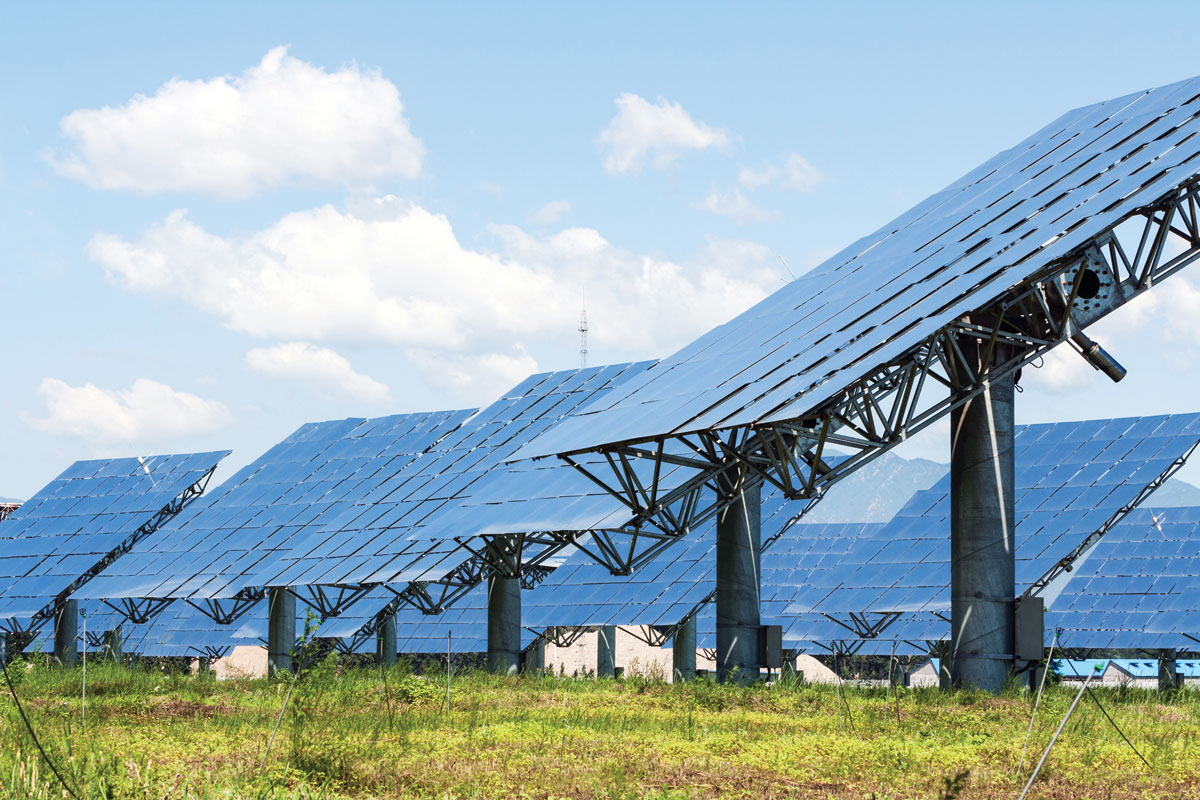THE SOLAR SWITCH
Over the recent past, Prime Minister @NarendraModi has not been able to check indiscreet remarks by colleagues, party ideologues that have tended to flare up communal and casteist sentiments. Modi has also not been able to control the violence perpetrated by its ally Shiv Sena in Maharashtra, in the name of jingoistic nationalism. Thankfully, some of his policy moves are having some impact that is making businesses rethink their strategies and investment plans. In a switch that has gained some momentum in India, coal miners, thermal power generators and large electricity consumers, both state-owned and private, are looking at solar energy as an important component of their investment portfolio, writes Siddharth Srivastava.
State-owned companies making the solar shift include the country’s monopoly miner, Coal India Limited (CIL), Neyveli Lignite Corporation (NLC), top generator National Thermal Power Corp (NTPC), among others. Private players with elaborate solar investment plans include Reliance Power and Adani Group that recently signed a strategic pact with Chinese energy giant Golden Concord Holdings Limited to set up photo-voltaic industry chain in Gujarat. The aim is to cut cost or generate additional revenues or ensure stable and increasingly cheaper supply of power.
Overseas players such as JA Solar, Canadian Solar, SunEdison, Foxconn, SkyPower, among others, are also looking to tap India’s solar sector. As per a recent Deutsche Bank report, investments in solar power in India could surpass coal by 2019-20, with $35 billion already committed. Under the National Solar Mission, New Delhi has set a target of 100 GW of installed solar capacity by 2022.
![]()
New Delhi Backs Solar
The solar focus makes sense due to an enabling policy paradigm. In keeping with the national targets it has set for the country, New Delhi has been pushing to install solar capacity at a quick pace. The government, for instance, has decided not to slap anti-dumping duties on cheaper solar panels from USA, China and Taiwan despite the much-touted “Make in India” manufacturing mantra aggressively backed by Modi. New Delhi has been goading enterprises and institutions under its control such as the Railways and the Army to set up solar plants for their electricity needs.
Indian Railway Minister Suresh Prabhu recently said Indian Railways, the largest single user of electricity in the country, can become the biggest producer of solar power given the large land bank at its disposal. NLC has been deepening its renewable portfolio, with focus on solar energy. NTPC has plans to set up 10,000 MW of solar power capacity, alongside buying 15,000 MW from solar project developers.
The solar switch is not just about commitment to promote clean energy, addressing climate change, showcasing corporate social responsibility, keeping the government happy or availing fiscal benefits that could translate into tax savings, as happened in India’s wind energy sector. There are compelling reasons for the move, including the sharply diminished cost of producing solar power that is headed towards grid parity or cost of producing thermal power.
Thermal generators in India have been struggling to deal with volatility in international price and supply of coal from Indonesia, South Africa or Australia. The sharply devaluing Rupee over the recent months has added to the uncertainty. The dependence on coal imports is due to inability of CIL to raise domestic production to meet rising demand. At the same time, aggressive bidding by developers and cost reducing technological developments across the world has resulted in sharp drop in solar tariffs to Rs. 5/kWh in India. Solar generators will, however, need to deal with some of the same issues that have bedeviled thermal generators, including land acquisition problems, ramshackle transmission and distribution infrastructure and finance.
One major area of reform is tariffs or electricity pricing in India. The country’s power sector faces the unique scenario of excess capacity co-existing with high demand. This is because the heavily debt-strapped state-owned distribution companies or “discoms” reason it better not to supply power to avoid losses as they are compelled by authorities to sell electricity below purchase cost due to political expediency. Land continues to be a scarce resource in India unlike the abundant sunshine. Prime areas located near urban areas, where power consumption is highest, is expensive. Buying agricultural land can be a political nightmare given failure of Modi government to legislate the industry-friendly land acquisition bill.
What Next?
No doubt India is on its way to substantially enhance its solar generation capabilities. Even if the target of 100,000 MW is not achieved, the capacity created will be large. The Modi government will, however, need to work harder to create an enabling ecosystem that promotes peaceful co-existence of India’s multiple communities. Modi, himself may not be directly complicit in the growing incidents of caste and communal violence in the country.
However, his government needs to convey in no uncertain terms to states and security agencies that such incidents will not be tolerated. Additionally, Modi needs to rein in rabble-rousing party functionaries who are doing no good to the government’s secular credentials. These challenges of governance will need to be overcome in order to retain the focus on growth and development. Or else India’s immense solar generation potential will probably remain unfulfilled.


